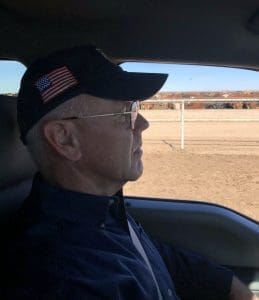By Chris McClure, Contributing Editor
For the most part, people trust the system. We need to make sure that remains true.
 THERE IS A TENDENCY to remain on a path once you have started down it. How do we bridge the gap between urban America and the food production systems of this country?
THERE IS A TENDENCY to remain on a path once you have started down it. How do we bridge the gap between urban America and the food production systems of this country?
The first assumption we have made is that there is a gap. The second is that it should be bridged. In general, much of what we “think” is incorrect. The problem is that we don’t “think,” we follow. If something fits our worldview, we immediately adopt it as truth. This is group think.
These are just a few of my thoughts as I settle into the topic of bridging the gap between urban and agriculture. They are disparate thoughts but reflect the turmoil in my head that is stimulated by the issue. I guess what I’m trying to say is that it’s complicated.
At some point, we as an industry decided there was a complete lack of understanding by the majority of the consuming public with how their food is produced. We in food production have focused our thinking and our “messaging” around that premise. We mostly end up talking to each other.
I believe we need to reexamine our approach. The first question we need to address is this perceived gap; is it real and does it even matter? I think that for a small, affluent and very vocal subset of our population it is real and does matter. We need to clearly define that demographic and craft our messaging specifically for them. However, I suspect the vast majority of the public either doesn’t really care or simply cues off of that vocal minority. If I’m even close to correct in this assumption, we need to use a rifle, not a shotgun, approach.
Most people just want to see grocery store shelves full of products they can afford in order to feed their families. With the exception of specialty mar- kets that cater to the affluent and vocal subset, I don’t really anticipate consumers will be pulling out their phones in order to scan a scatter-code that tells some carefully vetted and skillfully crafted marketing spiel about the product they are purchasing. Most of them are looking at price and figuring out whether they can afford to splurge on something special.
For the most part, people trust the system. We need to make sure that remains true.
I am also a believer in being proactive in my approach to life. It is always better to prevent than to remedy when something goes wrong. How do we take such an approach with our customers in order to ensure that they remain loyal and their confidence in the system remains high? That’s where education comes in.
The beliefs of young people in this country have been shifted radically over the last few generations by our education system. Many of the things us old gray heads took as fact have been skewered, re-painted and sold as absolutely wrong- headed. The thinking of our children and grandchildren has been turned upon its head when compared with the values we were taught. Our messaging needs to be focused on educating future generations of consumers. It just happens that we have a few very powerful allies in the task.
Our first ally is the tendency for young people to rebel. Has anyone ever met a teenager who wouldn’t argue with you? It is only after they have been indoctrinated that their beliefs achieve a firmness that is difficult to shake. No matter our stance on issues, the accusa- tions frequently fly that the “other” side is indoctrinating our youth. Okay. Let’s go with it. Target youth with educational opportunities that show them how food is produced and how they can be part of ensuring wholesome food supplies for generations to come. That leads us to another ally – the desire to do some- thing meaningful.
Feeding this world is a meaningful cause that can motivate our youth. Let’s focus on teaching them how to be a part of that. I’m not just talking about 4-H and FFA, which is great for rural kids, but we need to reach inner city and suburban youth.
Another ally is technology. With social media tools we can reach millions at a very low cost. Perhaps National Cattle- men’s Beef Association could develop a series of educational videos for stream- ing to schools at no charge. If they were also to align with other agriculturally related organizations, the story of food could be told as part of the education of our children. Couple this with legisla- tive initiatives that encourage schools to include food production as part of their curriculum and we might just have a winner.





